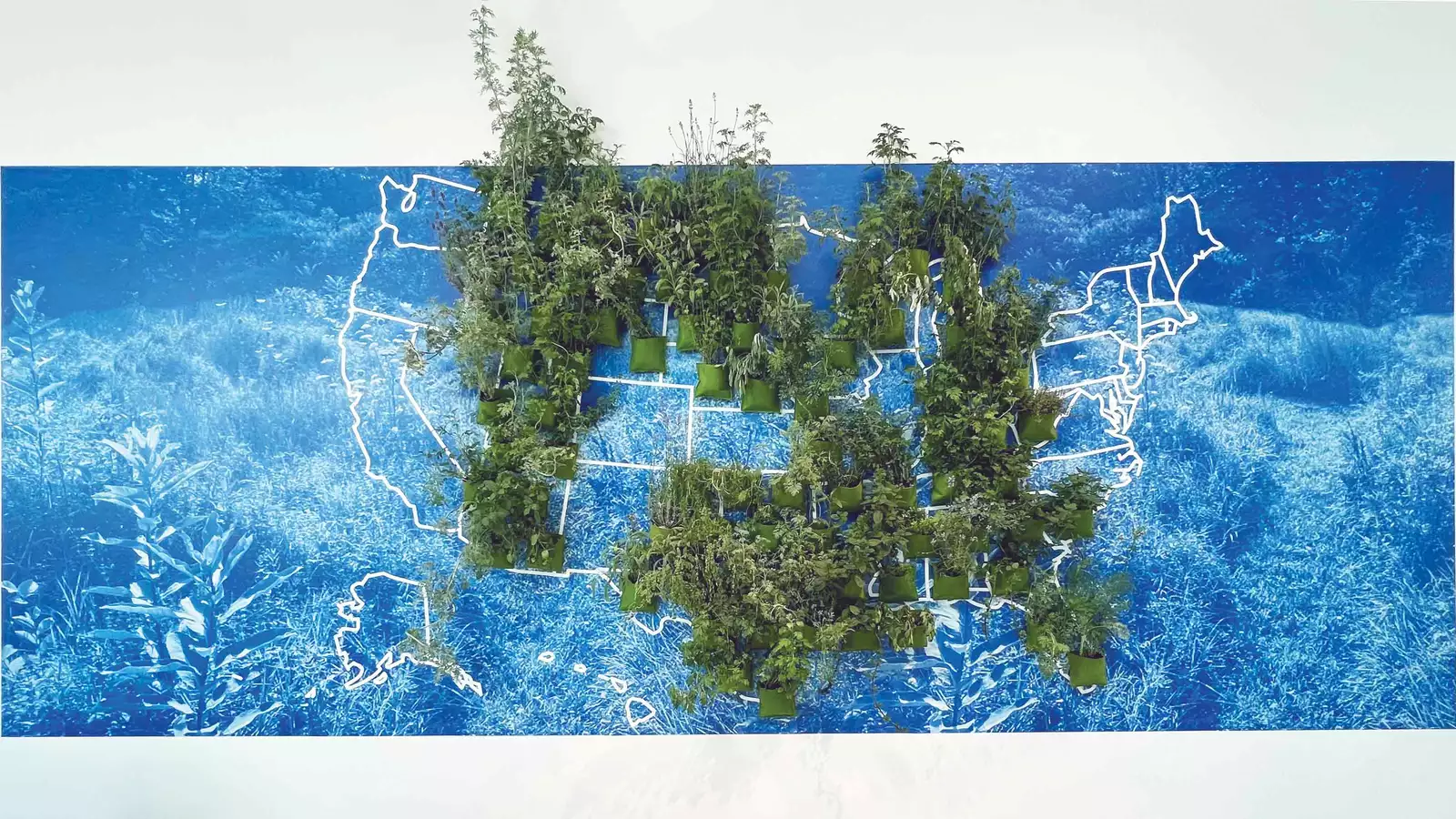
With the Women in Agency Festival, La Femme Theatre Productions founder Jean Lichty ’81 gives recent Barnard grads a powerful platform for original work

In May 2022, shortly after news of the U.S. Supreme Court’s intent to strike down Roe v. Wade was leaked to the press, Barnard’s Kadambari Baxi, professor of practice in architecture, collaborated with artists Maureen Connor and Landon Newton to mount Trigger Planting (above) at the Frieze New York art fair.
The deceptively serene display shows herbs — chamomile, verbena, rosemary, parsley, and sage, among others — superimposed atop a map of the United States with plants seemingly growing from states they’d thrive in. But in this case, the herbs — which, according to Baxi, held a history of being used for herbal-induced abortions — mark jurisdictions where trigger laws banning abortion would go into effect the moment Roe was overturned. That included 26 states with trigger laws, near-total bans, six-week bans, and/or state constitutional amendments that prohibit protections on abortion.
On October 9, Baxi mounted the multisite exhibition Trigger Planting 2.0 in the outside garden and in the lobby and library of the Milstein Center for Teaching and Learning. Opened one month before the presidential election, the yearlong project — using medicinal plants, data, maps, and other materials — “surveys the shifting political, legal, social, and environmental landscapes and advocates for forms of expansive reproductive justice and ecologies of resistance,” according to Baxi and the exhibition organizers. The exhibition — curated by Miriam Neptune, director of Milstein Center Exhibitions, Programming, and Public Engagement — is a collaborative effort by students and Keith Gabora, Barnard’s lead groundskeeper and horticulturist.
Above: Trigger Planting, 2022. 19 x 45 feet. Kadambari Baxi, Maureen Connor, and Landon Newton (members of the art and pedagogy collective known as ‘how to perform an abortion’). Commissioned by A.I.R. Gallery in partnership with National Women’s Liberation.